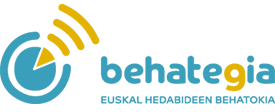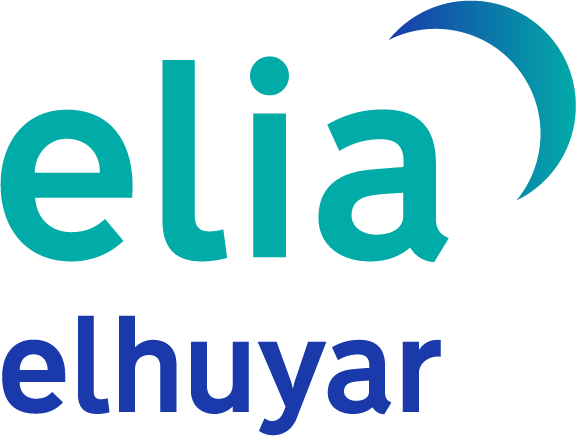The possibilities open up between the fogs, where the horizon appears, but together with it, the challenges to be reached are evident for communication in Basque. If we consider the first era of Covid-19 as a key period to accelerate the trend of digitization, no sign of doubt has left us a rough period without a clear horizon in time. So let us look at the digital horizon and the new questions, challenges and opportunities.
This Yearbook in front of you wants to be a tool to help you draw the horizon.
In this issue we present fourteen articles with twenty-one authors fellow travellers. Reflections of deep inspiration, stories of a shorter trajectory in the first person, explanations with data and questions with great need for answer, of everything you will find in this Yearbook of the Basque Media 2021.
What we have said before is confirmed by the first chronicle. The chronicle <2021 International media ecosystem: a digital and streamed overmorrow>, written by Libe Mimenza Castillo, coordinator of the Observatory of the Basque Media and member of the NOR Research Group of the UPV/EHU shows us in this field. We have a second chronicle <Despite the difficulties, basque media towards innovation>, which in this case focuses on Euskal Herria and a review of the last year, by Igor Astibia Teiletxea, director of the Basque Media Association HEKIMEN. Both share the need of a transformation approach required by the current situation.
In this yearbook we premiered a new section, we call it 'signature' and it is an open window for reflection. Our first guest is the writer Joseba Sarrionandia Uribelarrea presents a brief essay with the title <The nation as a communication space>. To prove that we have a nation, it may be possible to put it more realistically and effectively the other way round: we do not have a nation. This and many other points the author puts on the table.
The next section consists of a series of brief articles prepared by those active in the sector, as well as an analysis of an initiative that seeks to influence society in close relationship with the sector. Izar Mendiguren Cosgaya, director of the Aiaraldea Media Branch, tells us how this medium has evolved and the big project built in its surroundings. Next, the 'Berria classroom' project published last year shows what other contributions a communication medium such as Berria can do, written by Ainhoa Oiartzabal Azketa and Mikel P. Ansa . The Arrosa radio network has a longer trajectory and Iraitz Gesalaga, coordinator of this network, tells us her twenty years of history. Linked to the radio waves, the incipient EITB Podkast portal is a good example of the path taken by the hearing and the first person coordinator, Ainhoa Etxebeste Arruabarrena, has left us his copy.> by the article. Also in the sector, but at a distance, we had the opportunity to attend the conference of Garazi Goia, from the United Kingdom, from which we have also brought a summary, because we believe it is essential to disseminate the statements of the audiovisual environment. To conclude with the short article section, Alexander Aginagalde López of the 'Screens in basque' grassroots platform created last year; It explains why it was created and the spirit of this group.
Longer studies are included in the fourth section of the Yearbook. The first is a study conducted by Edorta Arana Arrieta, Maialen Goirizelaia Altuna, Naia Laka Arrizubieta, Blanca Miguelez-Juan, Bea Narbaiza Amillategi and Itziar Zorita Agirre, researchers from the Applika+ Research Project and the Ikusiker panel. Among other conclusions, the work accounts for the lack of publicity of fiction produced in Basque among youth.
Following the line, what is to be done with the automatic translation that already exists between us, is one of those questions that we will have to answer immediately. Josu Aztiria Uraran, Director of the Artificial Intelligence Language Unit of the Elhuyar Foundation, delves into the subject and proposes several working hypotheses in this long article. It is a vision that can help make short-term decisions. The experience of the scientific publication Zientzia .eus, which began last year in five languages other than Basque, using the automatic translator Elia, is included as a supplement to the article. We are told by the director of Elhuyar magazine, Aitziber Agirre Ruiz de Arkaute.
Article 12 Analysis of the web traffic of the media belonging to Hekimen we have work. Josu Azpillaga Labaka of the company Codesyntax has written, one more year, about the web traffic of basque media and compared it to the sharp increase in the hearings of the previous year, the websites have experienced an expected decrease in the number of users and traffic. However, there are other aspects that the author analyzes in depth this year.
On the other hand, the coordinator of the NOR Research Group, Josu Amezaga Albizu, states that we are very short in the measuring instruments of the media audience in Basque. In his work, the thirteenth of this Yearbook, in addition to reviewing the needs and demands made so far in the field of measurement, analyzes the attempts made and their weaknesses and strengths, and from them and the deep knowledge of the subject, elaborates a consistent approach for an irreversible measurement system.
The work we have selected to close the Yearbook is a research and compelling collection done by Arantza Gutierrez Paz and Itxaso Fernández Astobiza, from the Research Group Visibility of women in the media. This study has related and described the feminist communication products that have emerged in recent decades, including from fanzines to radio, print and audiovisual programs. They have had the Basque axis, but they have also received several productions in Spanish. At the Basque Media Observatory we have taken advantage of this work, by the way, to build the database of feminist products and to introduce the directory from now on that we are going to complete.
Evidently, you have a publication in front of you that exceeds the concept of just a Yearbook. Retrieving what we said in the initial lines, this is a useful tool to look at the digital horizon and address new questions, challenges and opportunities.


